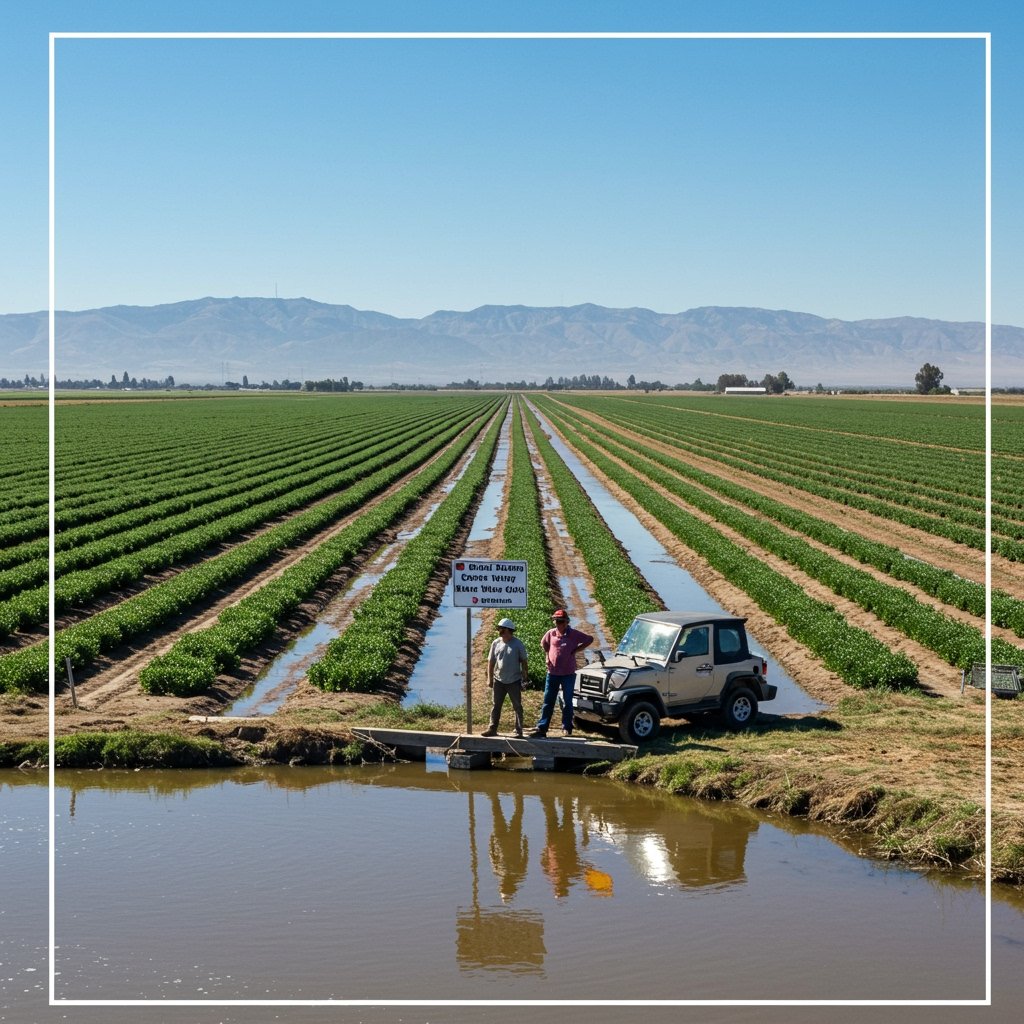State Imposes Drastic Restrictions
SACRAMENTO, CA – In a critical move underscoring the severity of California’s ongoing water crisis, the California State Water Resources Control Board announced sweeping Stage 3 water use restrictions for irrigators in key parts of the Central Valley on May 26, 2025. Citing alarmingly low reservoir levels and persistent drought conditions across the state, the board implemented the stringent measures to conserve scarce water resources. The restrictions are set to take effect on June 1, 2025, marking a significant escalation in the state’s response to the multi-year dry spell.
Impact on Central Valley Agriculture
The decision directly targets the heartland of California’s agricultural production – the Central Valley. This fertile region relies heavily on surface water deliveries for irrigation, and Stage 3 restrictions mean drastically reduced, potentially even zero, allocations for many agricultural users in affected areas. The curtailments are expected to impact thousands of acres of farmland, threatening the viability of numerous farming operations that underpin the local and state economy. The sheer scale of the Central Valley means these restrictions will have far-reaching consequences beyond individual farms.
Threat to Water-Intensive Crops
The restrictions pose a particularly acute threat to farmers cultivating water-intensive permanent crops, such as almonds and pistachios. These valuable nut crops, major exports for California, require consistent irrigation throughout the year, even in drought conditions, simply to keep the trees alive. Unlike annual crops that can be fallowed, trees cannot be easily shut down. Farmers face the agonizing choice of using increasingly expensive and often scarce groundwater (if available), allowing trees to die, or drastically reducing irrigation with uncertain outcomes for future yields. The economic investment in these orchards represents years of work and substantial capital, making the potential losses from water curtailment particularly devastating.
Significant Economic Hardship Expected
Local farmers in the Central Valley are bracing for significant economic hardship. The Stage 3 restrictions will lead to drastically reduced harvests, potential loss of high-value permanent crops, increased operational costs related to alternative water sources, and reduced income. This economic pain is not confined to farm owners; it extends to farmworkers whose jobs depend on irrigated agriculture, as well as associated industries like processing plants, equipment suppliers, and transportation services. The ripple effect through Central Valley communities is anticipated to be substantial, compounding financial pressures already faced by agricultural businesses navigating volatile markets and rising costs.
Farm Bureau Voices Strong Opposition
The agricultural community’s response has been swift and critical. The California Farm Bureau Federation has voiced strong opposition to the State Water Board’s decision, arguing that the severe cuts will decimate livelihoods and impact the nation’s food supply chain. The organization acknowledges the need for conservation but contends that the burden placed on agriculture is disproportionate. The Farm Bureau is actively lobbying Sacramento, urging Governor Gavin Newsom’s administration and the state legislature to recognize the emergency situation facing farmers and to expedite emergency relief funding to mitigate the immediate financial damage caused by the restrictions. They argue that financial assistance is crucial to help farmers survive this crisis and preserve the state’s agricultural infrastructure.
Environmental Advocates Seek Long-Term Solutions
On the other side of the complex water debate, Environmental advocates have largely expressed support for the immediate imposition of Stage 3 restrictions. They view these curtailments as a necessary measure to protect critical ecosystems and ensure minimum flows in rivers and streams for fish and wildlife, many of which are threatened or endangered. While supporting the present action, these groups are simultaneously pushing for more fundamental change. They advocate for comprehensive long-term water management reforms across California, including greater investment in conservation incentives, efficiency improvements, water recycling, stormwater capture, and changes to water rights systems to better reflect the realities of a drier climate. They emphasize that short-term restrictions must be part of a broader strategy for sustainable water use.
Escalating Tensions Over Water
The State Water Resources Control Board’s announcement further highlights the escalating tensions between agricultural needs and environmental conservation efforts that characterize California’s water politics. The Central Valley restrictions are a stark manifestation of the difficult choices the state faces in allocating limited water resources among competing demands during periods of severe drought. As the June 1, 2025 effective date approaches, the focus shifts to how the restrictions will be implemented, the extent of their impact on the ground, and whether state policymakers will provide the relief sought by the agricultural sector. The situation remains fluid, with the potential for significant economic and social consequences unfolding across the state.



















